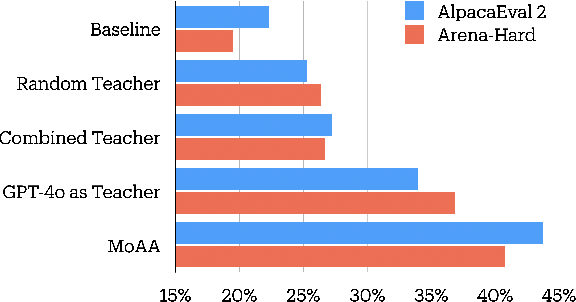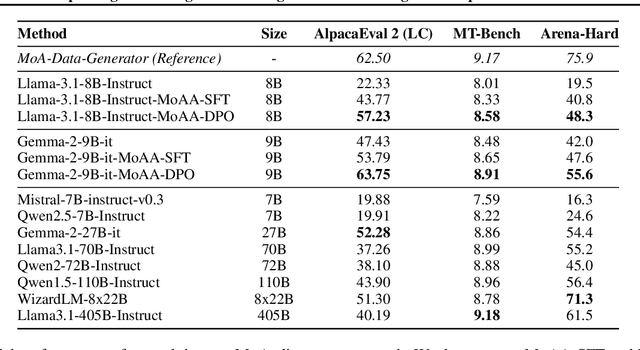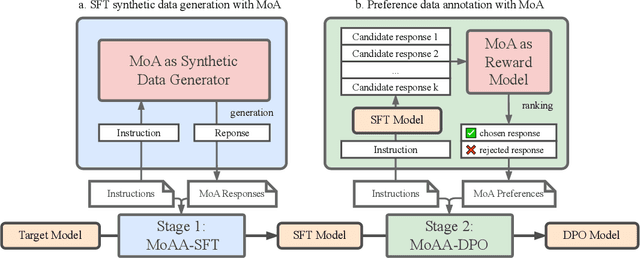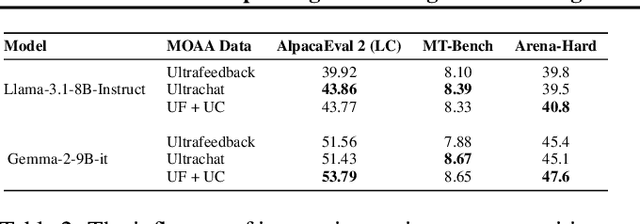Jue Wang
Zach
Maritime Communication in Evaporation Duct Environment with Ship Trajectory Optimization
Oct 08, 2025Abstract:In maritime wireless networks, the evaporation duct effect has been known as a preferable condition for long-range transmissions. However, how to effectively utilize the duct effect for efficient communication design is still open for investigation. In this paper, we consider a typical scenario of ship-to-shore data transmission, where a ship collects data from multiple oceanographic buoys, sails from one to another, and transmits the collected data back to a terrestrial base station during its voyage. A novel framework, which exploits priori information of the channel gain map in the presence of evaporation duct, is proposed to minimize the data transmission time and the sailing time by optimizing the ship's trajectory. To this end, a multi-objective optimization problem is formulated and is further solved by a dynamic population PSO-integrated NSGA-II algorithm. Through simulations, it is demonstrated that, compared to the benchmark scheme which ignores useful information of the evaporation duct, the proposed scheme can effectively reduce both the data transmission time and the sailing time.
Staircase Streaming for Low-Latency Multi-Agent Inference
Oct 06, 2025Abstract:Recent advances in large language models (LLMs) opened up new directions for leveraging the collective expertise of multiple LLMs. These methods, such as Mixture-of-Agents, typically employ additional inference steps to generate intermediate outputs, which are then used to produce the final response. While multi-agent inference can enhance response quality, it can significantly increase the time to first token (TTFT), posing a challenge for latency-sensitive applications and hurting user experience. To address this issue, we propose staircase streaming for low-latency multi-agent inference. Instead of waiting for the complete intermediate outputs from previous steps, we begin generating the final response as soon as we receive partial outputs from these steps. Experimental results demonstrate that staircase streaming reduces TTFT by up to 93% while maintaining response quality.
MOOSE-Chem3: Toward Experiment-Guided Hypothesis Ranking via Simulated Experimental Feedback
May 23, 2025Abstract:Hypothesis ranking is a crucial component of automated scientific discovery, particularly in natural sciences where wet-lab experiments are costly and throughput-limited. Existing approaches focus on pre-experiment ranking, relying solely on large language model's internal reasoning without incorporating empirical outcomes from experiments. We introduce the task of experiment-guided ranking, which aims to prioritize candidate hypotheses based on the results of previously tested ones. However, developing such strategies is challenging due to the impracticality of repeatedly conducting real experiments in natural science domains. To address this, we propose a simulator grounded in three domain-informed assumptions, modeling hypothesis performance as a function of similarity to a known ground truth hypothesis, perturbed by noise. We curate a dataset of 124 chemistry hypotheses with experimentally reported outcomes to validate the simulator. Building on this simulator, we develop a pseudo experiment-guided ranking method that clusters hypotheses by shared functional characteristics and prioritizes candidates based on insights derived from simulated experimental feedback. Experiments show that our method outperforms pre-experiment baselines and strong ablations.
FloE: On-the-Fly MoE Inference on Memory-constrained GPU
May 12, 2025Abstract:With the widespread adoption of Mixture-of-Experts (MoE) models, there is a growing demand for efficient inference on memory-constrained devices. While offloading expert parameters to CPU memory and loading activated experts on demand has emerged as a potential solution, the large size of activated experts overburdens the limited PCIe bandwidth, hindering the effectiveness in latency-sensitive scenarios. To mitigate this, we propose FloE, an on-the-fly MoE inference system on memory-constrained GPUs. FloE is built on the insight that there exists substantial untapped redundancy within sparsely activated experts. It employs various compression techniques on the expert's internal parameter matrices to reduce the data movement load, combined with low-cost sparse prediction, achieving perceptible inference acceleration in wall-clock time on resource-constrained devices. Empirically, FloE achieves a 9.3x compression of parameters per expert in Mixtral-8x7B; enables deployment on a GPU with only 11GB VRAM, reducing the memory footprint by up to 8.5x; and delivers a 48.7x inference speedup compared to DeepSpeed-MII on a single GeForce RTX 3090 - all with only a 4.4$\%$ - 7.6$\%$ average performance degradation.
FloE: On-the-Fly MoE Inference
May 09, 2025Abstract:With the widespread adoption of Mixture-of-Experts (MoE) models, there is a growing demand for efficient inference on memory-constrained devices. While offloading expert parameters to CPU memory and loading activated experts on demand has emerged as a potential solution, the large size of activated experts overburdens the limited PCIe bandwidth, hindering the effectiveness in latency-sensitive scenarios. To mitigate this, we propose FloE, an on-the-fly MoE inference system on memory-constrained GPUs. FloE is built on the insight that there exists substantial untapped redundancy within sparsely activated experts. It employs various compression techniques on the expert's internal parameter matrices to reduce the data movement load, combined with low-cost sparse prediction, achieving perceptible inference acceleration in wall-clock time on resource-constrained devices. Empirically, FloE achieves a 9.3x compression of parameters per expert in Mixtral-8x7B; enables deployment on a GPU with only 11GB VRAM, reducing the memory footprint by up to 8.5x; and delivers a 48.7x inference speedup compared to DeepSpeed-MII on a single GeForce RTX 3090.
Improving Model Alignment Through Collective Intelligence of Open-Source LLMS
May 05, 2025



Abstract:Building helpful and harmless large language models (LLMs) requires effective model alignment approach based on human instructions and feedback, which necessitates high-quality human-labeled data. Constructing such datasets is often expensive and hard to scale, and may face potential limitations on diversity and generalization. To address these challenges, we introduce Mixture of Agents Alignment (MoAA), that leverages the collective strengths of various language models to provide high-quality data for model alignment. By employing MoAA, we enhance both supervised fine-tuning and preference optimization, leading to improved performance compared to using a single model alone to generate alignment data (e.g. using GPT-4o alone). Evaluation results show that our approach can improve win rate of LLaMA-3.1-8B-Instruct from 19.5 to 48.3 on Arena-Hard and from 22.33 to 57.23 on AlpacaEval2, highlighting a promising direction for model alignment through this new scalable and diverse synthetic data recipe. Furthermore, we demonstrate that MoAA enables a self-improvement pipeline, where models finetuned on MoA-generated data surpass their own initial capabilities, providing evidence that our approach can push the frontier of open-source LLMs without reliance on stronger external supervision. Data and code will be released.
CHASe: Client Heterogeneity-Aware Data Selection for Effective Federated Active Learning
Apr 24, 2025



Abstract:Active learning (AL) reduces human annotation costs for machine learning systems by strategically selecting the most informative unlabeled data for annotation, but performing it individually may still be insufficient due to restricted data diversity and annotation budget. Federated Active Learning (FAL) addresses this by facilitating collaborative data selection and model training, while preserving the confidentiality of raw data samples. Yet, existing FAL methods fail to account for the heterogeneity of data distribution across clients and the associated fluctuations in global and local model parameters, adversely affecting model accuracy. To overcome these challenges, we propose CHASe (Client Heterogeneity-Aware Data Selection), specifically designed for FAL. CHASe focuses on identifying those unlabeled samples with high epistemic variations (EVs), which notably oscillate around the decision boundaries during training. To achieve both effectiveness and efficiency, \model{} encompasses techniques for 1) tracking EVs by analyzing inference inconsistencies across training epochs, 2) calibrating decision boundaries of inaccurate models with a new alignment loss, and 3) enhancing data selection efficiency via a data freeze and awaken mechanism with subset sampling. Experiments show that CHASe surpasses various established baselines in terms of effectiveness and efficiency, validated across diverse datasets, model complexities, and heterogeneous federation settings.
HMI: Hierarchical Knowledge Management for Efficient Multi-Tenant Inference in Pretrained Language Models
Apr 24, 2025Abstract:The significant computational demands of pretrained language models (PLMs), which often require dedicated hardware, present a substantial challenge in serving them efficiently, especially in multi-tenant environments. To address this, we introduce HMI, a Hierarchical knowledge management-based Multi-tenant Inference system, designed to manage tenants with distinct PLMs resource-efficiently. Our approach is three-fold: Firstly, we categorize PLM knowledge into general, domain-specific, and task-specific. Leveraging insights on knowledge acquisition across different model layers, we construct hierarchical PLMs (hPLMs) by extracting and storing knowledge at different levels, significantly reducing GPU memory usage per tenant. Secondly, we establish hierarchical knowledge management for hPLMs generated by various tenants in HMI. We manage domain-specific knowledge with acceptable storage increases by constructing and updating domain-specific knowledge trees based on frequency. We manage task-specific knowledge within limited GPU memory through parameter swapping. Finally, we propose system optimizations to enhance resource utilization and inference throughput. These include fine-grained pipelining via hierarchical knowledge prefetching to overlap CPU and I/O operations with GPU computations, and optimizing parallel implementations with batched matrix multiplications. Our experimental results demonstrate that the proposed HMI can efficiently serve up to 10,000 hPLMs (hBERTs and hGPTs) on a single GPU, with only a negligible compromise in accuracy.
Think Deep, Think Fast: Investigating Efficiency of Verifier-free Inference-time-scaling Methods
Apr 18, 2025Abstract:There is intense interest in investigating how inference time compute (ITC) (e.g. repeated sampling, refinements, etc) can improve large language model (LLM) capabilities. At the same time, recent breakthroughs in reasoning models, such as Deepseek-R1, unlock the opportunity for reinforcement learning to improve LLM reasoning skills. An in-depth understanding of how ITC interacts with reasoning across different models could provide important guidance on how to further advance the LLM frontier. This work conducts a comprehensive analysis of inference-time scaling methods for both reasoning and non-reasoning models on challenging reasoning tasks. Specifically, we focus our research on verifier-free inference time-scaling methods due to its generalizability without needing a reward model. We construct the Pareto frontier of quality and efficiency. We find that non-reasoning models, even with an extremely high inference budget, still fall substantially behind reasoning models. For reasoning models, majority voting proves to be a robust inference strategy, generally competitive or outperforming other more sophisticated ITC methods like best-of-N and sequential revisions, while the additional inference compute offers minimal improvements. We further perform in-depth analyses of the association of key response features (length and linguistic markers) with response quality, with which we can improve the existing ITC methods. We find that correct responses from reasoning models are typically shorter and have fewer hedging and thinking markers (but more discourse markers) than the incorrect responses.
Scaling Instruction-Tuned LLMs to Million-Token Contexts via Hierarchical Synthetic Data Generation
Apr 17, 2025Abstract:Large Language Models (LLMs) struggle with long-context reasoning, not only due to the quadratic scaling of computational complexity with sequence length but also because of the scarcity and expense of annotating long-context data. There has been barely any open-source work that systematically ablates long-context data, nor is there any openly available instruction tuning dataset with contexts surpassing 100K tokens. To bridge this gap, we introduce a novel post-training synthetic data generation strategy designed to efficiently extend the context window of LLMs while preserving their general task performance. Our approach scalably extends to arbitrarily long context lengths, unconstrained by the length of available real-world data, which effectively addresses the scarcity of raw long-context data. Through a step-by-step rotary position embedding (RoPE) scaling training strategy, we demonstrate that our model, with a context length of up to 1M tokens, performs well on the RULER benchmark and InfiniteBench and maintains robust performance on general language tasks.
 Add to Chrome
Add to Chrome Add to Firefox
Add to Firefox Add to Edge
Add to Edge